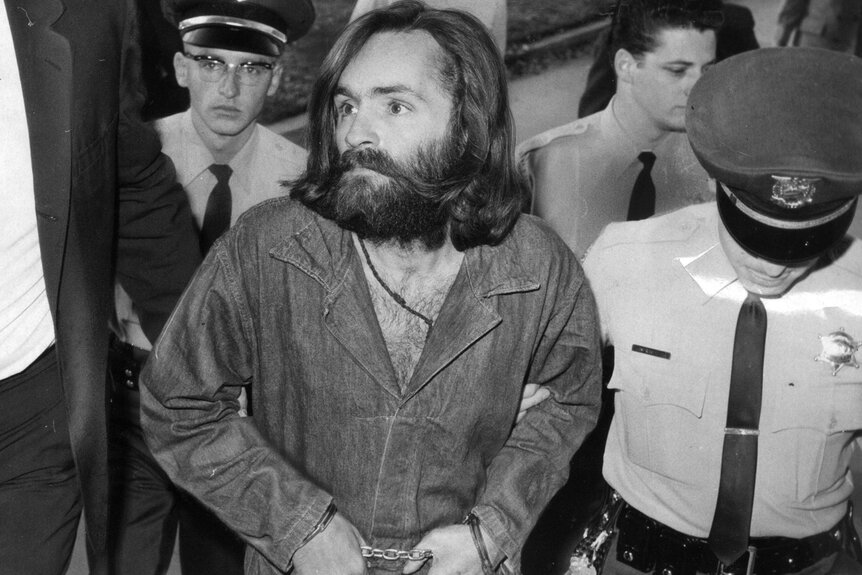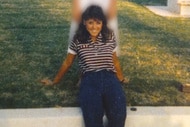Create a free profile to get unlimited access to exclusive videos, breaking news, sweepstakes, and more!
The Manson Family Is One of the Most Notorious Cults Ever — But What Did They Really Believe?
Charles Manson lured his followers in with the promise of an idyllic life centered on free love and acceptance, before indoctrinating them and convincing some of them to kill.
Charles Manson and his followers may be best known for the brutal string of murders they carried out in the summer of 1969, but the group’s focus wasn’t always murder and mayhem.
Many of Manson’s followers have said they were attracted by the charismatic cult leader's full acceptance, the sense of community in the group, and the drug-addled philosophy and music sessions that were a regular part of daily life.
“These young women were searching for love,” Lis Wiehl, author of Hunting Charles Manson: The Quest for Justice in the Days of Helter Skelter said in Oxygen’s special Manson: The Women. “Charlie was dynamic and charismatic and he would play the guitar and he sang and it was in that culture where these young women were searching for love.”
Charles Manson and his Family are the focus of another new series, Making Manson, premiering on Peacock on November 19. The three-part docuseries includes never-before-heard conversations with Manson himself. Before it premieres, learn more about what the Manson Family believed in.
What did the Manson Family believe?
The cult spent much of its time on the rundown Spahn Ranch, a property owned by George Spahn that once served as the backdrop for old western movies and television shows. Former Family member Sandra Good, who remained “thankful” to Manson until his death, recalled the picturesque days spent on the ranch while speaking to producers of Manson: The Women.
“Sitting around the ranch front, drinking coffee, watching the parade of wranglers and writers, George Spahn taking his daily walk ... chickens clucking, roosters crowing, the old goat, the dog, the horses coming and going with new riders on their backs," she recalled of the group’s early days.
She credited Manson with teaching her about the “deep connection to the natural world” that humans should have or risk “dire consequences.”
“Children, animals, humans cannot survive without clean air, clean water, trees, and our wildlife,” she said.
Dianne Lake, who joined the group when she was just 14 years old and would later testify against Manson in court, recalled spending her days with the cult dumpster diving for food, caring for the horses on the ranch, taking LSD, listening to Manson sing his distinctive folk songs, and having group orgies, according to History.com.
Many described Manson showering them with love and acceptance in their early days with the group.
“He wound find the vulnerability in each of the women that he gathered, and he would become that,” Deborah Herman, who co-wrote the book Member of the Family: My Story of Charles Manson, Life Inside His Cult, and the Darkness That Ended the Sixties with Lake said in Manson: The Women.
As the counterculture movement of the late 1960s reached its peak, many of the women and men in the group were lured in by the drugs, free-love philosophy, and charismatic cult leader himself.
What did Charles Manson tell his followers?
But in the midst of what may have seemed an idyllic ranch life, Manson was using his influence to gain greater control of his followers, often directing many aspects of their daily lives.
“LSD was given out like a sacrament. We took turns taking each other’s clothes off, in a circle,” Lake recalled of the regular orgies. “He orchestrated all of it. He even arranged the partners.”
During drug-induced philosophy sessions, Manson, an ex-con turned spiritual guru, claimed to be Jesus Christ and preached to his followers, according to USA Today.
Former follower Catherine Share once told the Australian version of the news show 60 Minutes that Manson was viewed by those in the group as a religious icon and that his word was considered “gospel.”
“He just seemed like he knew everything,” she said. “And he seemed at peace and happy all the time.”
It wasn’t all peace and love, however. Many of Manson’s followers also reported seeing a much darker side to Manson.
“Those early days were probably very fulfilling and probably very loving, but they were also confusing because from the very beginning Manson couldn’t hide his dark side,” Herman said.
“Diane would expect that she’s doing something nice and good and he would just haul off and hit her for no reason and then say, ‘That’s your fault. You need a man to show you how to behave,’” she continued.
In the docuseries, Share described suffering a vicious beating from Manson after she forgot to relay a phone message.
"Some people could not leave. I was one of them that could not leave," she would later testify at a parole hearing on behalf of Leslie Van Houten while speaking about Manson’s control, according to the Associated Press.
What made Charles Manson’s followers kill?
The mood on the ranch shifted even further after Manson discovered The Beatles’ White Album and told his followers the popular musicians were sending subliminal messages through their songs.
He believed the song “Helter Skelter” — which Paul McCartney wrote about a children’s slide — was predicting an apocalyptic race war between white people and Black people.
Follower Paul Watkins would later write in his book My Life With Charles Manson that Manson began to use the phrase “helter skelter” around the compound to refer to a battle where “the Negros were going to come down and rip the cities all apart.”
Prosecutor Vincent Bugliosi argued at trial that Manson had been trying to start the race war himself when he sent a small group of followers into the night in August 1969 to savagely murder pregnant actress Sharon Tate and four others at her house, writing “pig” in blood on the front door. According to Bugliosi’s closing statement, Manson believed the murder of the affluent white victims would be blamed on Blacks, kicking off the war.
The next night, his followers headed out again to kill grocer Leno LaBianca and his wife Rosemary. After murdering the couple, Charles “Tex” Watson, Patricia Krenwinkel and Van Houten, used the victim's blood to write “healter [sic] skelter” on the refrigerator and “death to pigs” on the wall. The word “war” was carved into Leno’s stomach.
“Of course, the principal motive for these murders, the main motive, was Helter Skelter, Manson's fanatical obsession, his mania with Helter Skelter,” Bugliosi said in his final comments to the jury. “Helter Skelter was Charlie's religion, a religion that he lived by. To Manson, Helter Skelter was the Black man rising up against the white man, and then the black-white war.”
Lake also believes Manson’s Helter skelter theory drove the violence.
"Most definitely,'' she said on TODAY. "He had been talking about this race war from the very beginning. He'd learned about this from his time in jail and reform school."
She added that he referred to The Beatles as the “four prophets” and himself as the second coming of Christ.
"I think that we were all under his kind of spell,'' she said.
Manson himself, who was later convicted and spent the rest of his life behind bars, always denied issuing the orders to kill.
“I didn’t have nothing to do with killing those people,” he told true crime producer and author James Buddy Day in a jailhouse phone call before his death, according to Time. “They knew I didn’t have anything to do with it.”
The violence landed Manson and those followers directly involved with the murders behind bars, while those that remained eventually scattered, serving time for other crimes or rejoining society.
Learn more about what Charles Manson had to say about the murders in Making Manson, premiering on November 19 on Peacock.
































